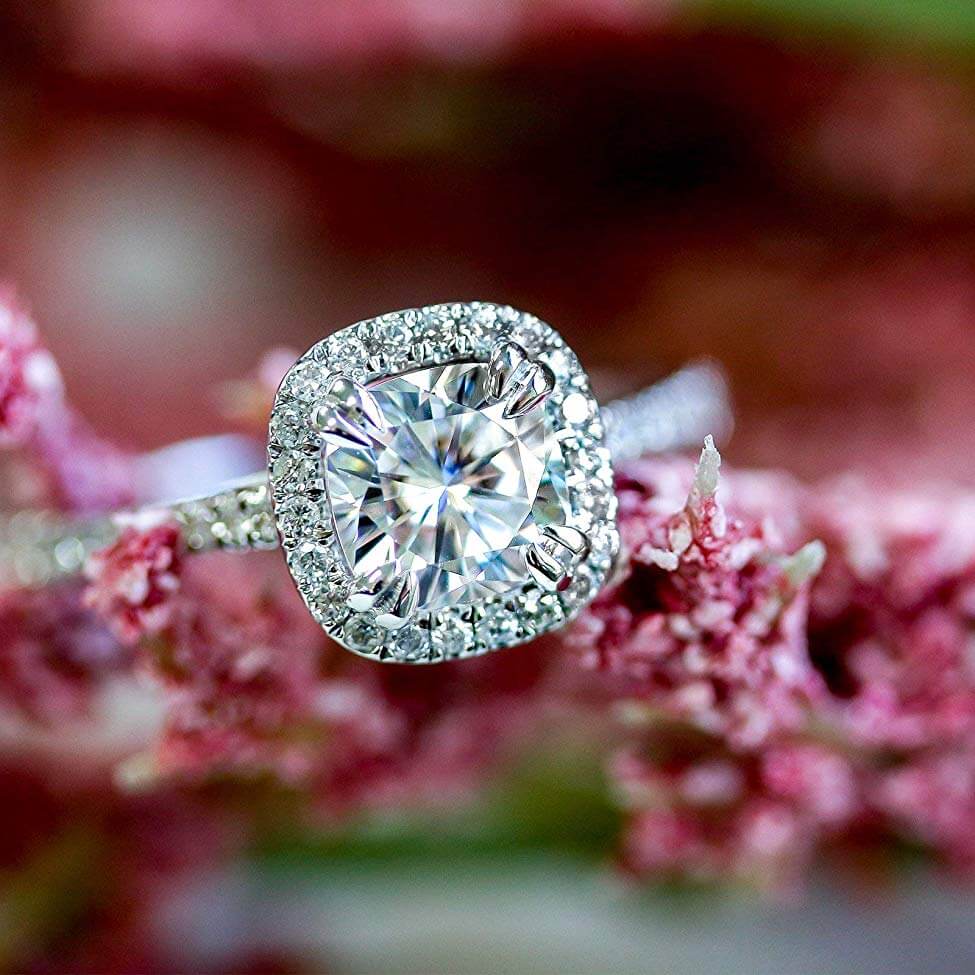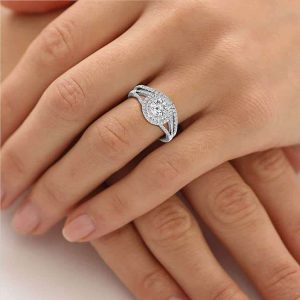So, what are lab grown diamonds? Lab-grown diamonds are man-made diamonds that are physically, chemically, and visually identical to natural diamonds. These diamonds are manufactured in a controlled environment under the same intense heat and pressure as natural diamonds, but they only take a few weeks to form rather than billions of years deep within the earth.
Lab-grown diamonds are one of the latest buzzwords in the diamond industry. But just what is a lab-grown diamond and how do I know which kind of diamond is right for me?
Keep reading to learn everything you need to know about lab-grown diamonds! From how lab-created diamonds form, to their physical properties and countless benefits.
What is a lab-created diamond?
Also known as man-made diamonds, lab-grown diamonds look so identical to natural diamonds that you need to use specialized equipment to tell the difference. They can come in any color, such as deep blues and vivid reds, and can be cut into any shape, like the classic round and modern oval shape.
Just like a natural diamond, lab-created diamonds are a 10 on the Mohs scale of hardness. Lab-grown diamonds are incredibly durable and versatile, making them the perfect alternative to natural diamonds for jewelry. Lab-created diamonds are so versatile that a group of scientists made an amazing 155 carat lab-grown diamond, the largest in the world!
What is the difference between lab-grown diamonds and diamond simulants?
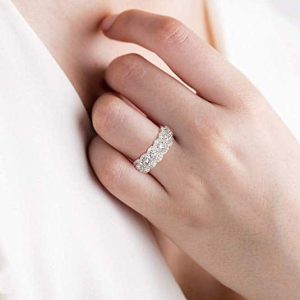 Lab-grown diamonds are very different from diamond simulants such as cubic zirconia, moissanite, and white topaz. Diamond simulants are imitation diamonds that do not have the same physical and chemical properties as natural or lab-created diamonds. In fact, diamond simulants can be spotted as imposters with your naked eye!
Lab-grown diamonds are very different from diamond simulants such as cubic zirconia, moissanite, and white topaz. Diamond simulants are imitation diamonds that do not have the same physical and chemical properties as natural or lab-created diamonds. In fact, diamond simulants can be spotted as imposters with your naked eye!
For example Cubic Zirconia and white topaz are an 8 to 8.5 on the Mohs scale. This means that diamond simulations are softer than real diamonds can get scratched more easily, becoming cloudy over time. Unlike cloudly looking diamond simulants that need to be replaced every few years, lab-grown diamonds will always look beautiful.
What are the benefits of lab-grown diamonds?
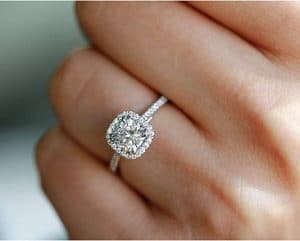 The biggest debate in the gemstone community has to do with the benefits and drawbacks of lab-grown diamonds in comparison to natural diamonds. The truth is that lab-created diamonds come with plenty of fantastic benefits:
The biggest debate in the gemstone community has to do with the benefits and drawbacks of lab-grown diamonds in comparison to natural diamonds. The truth is that lab-created diamonds come with plenty of fantastic benefits:
They ARE Real Diamonds:
Despite not requiring billions of years to form deep within the earth or having been extracted from a mine, lab-grown diamonds are real diamonds with the same chemical, physical, and visual properties as their natural counterparts.
High Quality:
Since lab-created diamonds are made in a controlled environment, these diamonds have fewer defects than naturally grown diamonds, making them brighter and whiter while keeping diamonds’ signature durability and sparkle. (Read Also: Which Diamonds Sparkle the Most?)
Versatile:
Lab-grown diamonds can come in any shape or color and be used in jewelry, just like any natural diamond. (Read Also: What Shapes do Diamonds Come In)
Availability:
There are countless brick-and-mortar stores as well as online jewelers selling lab-created diamonds, even classic natural diamond brands such as De Beers are making the change to sell lab-grown diamonds. With their widespread sale, there are plenty of lab-grown diamond styles and settings you can shop. (Read Also: Best Place to Buy Engagement Rings)
Gradable:
Just like natural diamonds, lab-grown diamonds can have their 4C’s (cut, color, clarity, and carat weight) as well as other characteristics evaluated by leading diamond labs such as the GIA, AGS, and IGI. With a lab report, you can know the exact characteristics of any lab-created diamond. (Read Also: What Does My Diamond Grade Mean?)
Affordability:
Lab-grown diamonds are significantly cheaper than naturally grown diamonds (Read Also: Top Tips for Buying a Cheap Engagement Ring), especially colored diamonds. A natural 1-carat blue diamond can cost $200,000, but a similar lab-grown blue diamond will cost you as little as a few thousand dollars (Read Also: Why do Diamonds Cost So Much).
Ethical:
With lab-created diamonds, you never need to worry about supporting blood or conflict diamonds that contribute to dangerous working conditions or civil conflicts. (Read Also: Which Diamonds are Conflict-Free?)
Sustainable:
Mining for natural diamonds causes significant environmental strain. Just one carat of mined diamonds creates 3.10 tons of earth displacement, 8.9 liters of fuel consumption, and 2,545.87 liters of water use. In 2012 alone, 128 million carats of diamonds were produced, the equivalent of 1.5 million cars worth of yearly C02 emissions.
What do lab-grown diamonds cost?
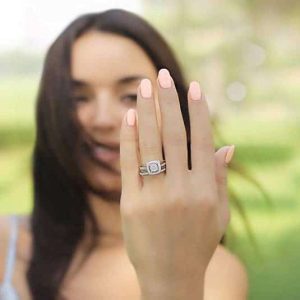 The great news is that lab-grown diamonds are significantly cheaper than natural diamonds. Depending on where you shop, you can expect to pay 20% to 40% less on a lab-grown diamond than you would on a similar natural diamond.
The great news is that lab-grown diamonds are significantly cheaper than natural diamonds. Depending on where you shop, you can expect to pay 20% to 40% less on a lab-grown diamond than you would on a similar natural diamond.
Natural diamonds are much more expensive because they go through a long supply chain before they can even be cut, polished, and mounted into jewelry. Alternatively, lab-created diamonds go through fewer hands, can be produced faster, and are not as rare as natural diamonds, making them more affordable. (Read Also: Which Diamonds are More Expensive?)
With natural diamonds becoming scarcer, their prices will rise. For example, the Argyle mine in Western Australia is set to close in 2021, and as the producer of 90% of the world’s pink diamonds, with no other comparable pink diamond mines insight, pink diamond prices will massively soar. Thankfully, lab-grown pink diamonds will always be affordable!
According to The Knot, the average price of an engagement ring in America during 2021 was $5,900. When you shop for a lab-created engagement ring, you can either save more money (perfect with upcoming wedding costs) or opt for an even larger and more glamorous diamond at the same price of its natural counterpart.
Should you buy a lab-created diamond?
When it comes down to it, the type of diamond you should buy is ultimately up to you. Naturally grown and lab-grown diamonds are equally beautiful, durable, and versatile gemstones that will last a lifetime.
For decades natural diamonds have been considered a classic jewelry staple, despite the detrimental effects of the mining process. Technological advancements have made lab-created diamonds a compelling alternative for thanks to their outstanding beauty, affordability, and environmental benefits.
With more people and jewelry brands moving towards sustainable practices, lab-grown diamonds are the perfect solution for a guilt-free and gorgeous diamond purchase with little environmental strain, all while at a fraction of a natural diamond’s cost.
FAQ
Is a lab-created diamond better than an earth-grown diamond?
This will really depend on your taste and preferences. Both can be conflict-free and will range widely in terms of grading and the 4 C’s. Lab-grown gems do allow you to get the most out of your budget, giving up to 30% more size for the same cost. Mined diamonds are naturally occurring, rarer by definition, and often seen as more traditional.
Where do lab-created diamonds actually come from?
Using modern, highly advanced technology, these diamonds are “grown” from a tiny sliver into a full diamond.
Are they any different from earth-grown diamonds?
Surprisingly to many people, they are identical in both chemical and optical composition. More importantly for some, the sparkle factor is also the same. The only difference is where they come from.
Which one has a higher quality?
Neither one. Because they’re the same in every way, it just depends on the actual grading. Color, cut, carat, and clarity may vary, but the quality of earth-grown and lab-grown is the same across the board.
How are lab-grown diamonds made?
Chemists begin with a very tiny sliver of chemicals (called a diamond seed). Then, they heat it up and pressurize it, which causes it to grow and become a fully-formed diamond for engagement rings or other uses. See also: How are Lab Diamonds Formed?
Can I still get an appraisal and lab certificate?
Absolutely. All diamonds can come with an appraisal and certificate, regardless of their origin.
Can a diamond expert tell the difference between earth and lab diamonds?
No. Even using a loupe, a professional and trained diamond expert cannot tell any “difference” between lab and earth diamonds, because no such difference exists. They are the same in optics and chemical structure.
